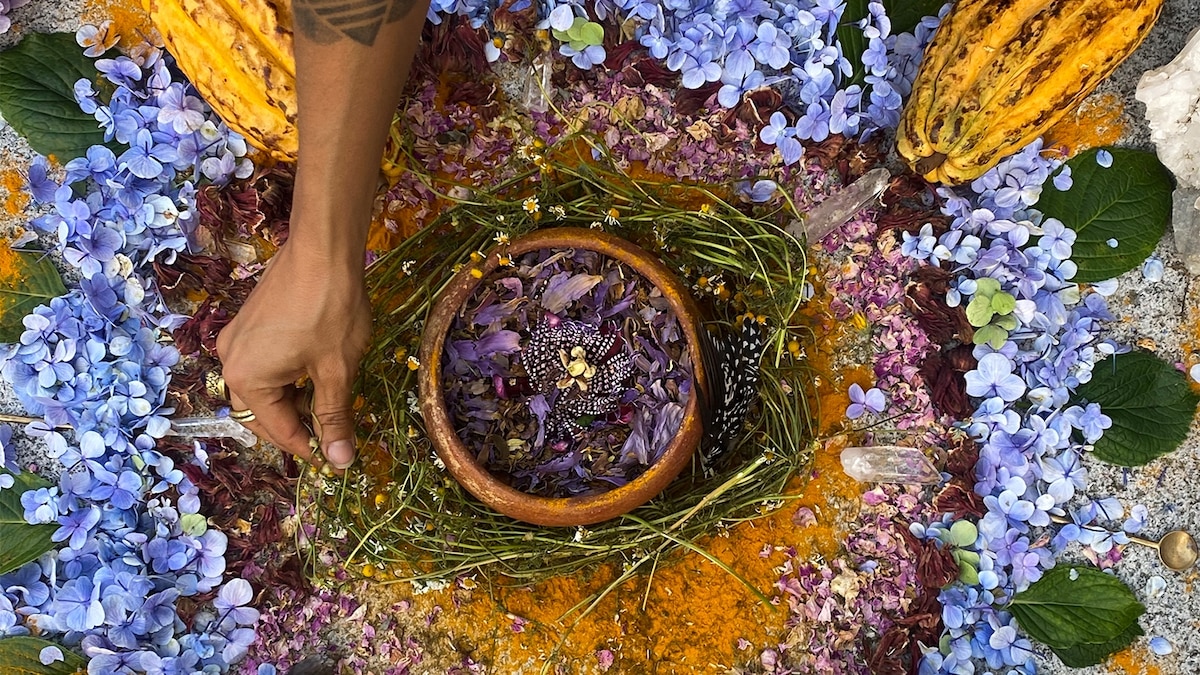Chamomile tea to relieve cramps and restlessness. Aloe to heal burns. Rue to expel from ojothe evil eye
Those are just a few of the herbal secrets that author Mimi Prunella Hernandez learned from her Mexican abuelita as she watched her grandmother lovingly gather weeds and pluck leaves for home remedies to treat common ailments. Later, Hernandez drew from his maternal Colombian roots to dive deeper into the world of herbal medicine, accumulating years of knowledge now shared in the upcoming book, National Geographic Herbal: 100 Herbs of the World’s Healing Traditions.
My bioregional lens as an herbalist of 27 years focuses on plants of the eastern United States, while my cultural perspective is steeped in Latin American folk herbalism, writes Hernandez, who is also the executive director of the American Herbalist Guild. My clinical training is rooted in Western herbal medicine with a pinch of Ayurveda. I draw from my unique tapestry my heritage, education, scientific pursuits and clinical experience combined with sound, evidence-based information balancing science, tradition and intuition.
Herbalism has shown me that even through the darkest grief, she continues, I can find solace in the plants.
Here are half a dozen herbs and their therapeutic uses:
Andrograph
Crowned the king of bitters, this herb originates from the forests and hillsides of India and Sri Lanka. Andrographis is revered for its potential immune-boosting properties and is often suggested at the first sign of a possible viral or bacterial infection. This powerful herb is rich in flavonoid compounds that can help relieve allergies and ease congestion. Andrographis can also promote heart health by relaxing the blood vessels, lowering blood pressure and preventing clots.
Cayenne
This spicy red chili offers a medicinal kick. One bite can make your senses dance a cha-cha. The consequences of flowing tears, runny nose, drooling mouth and spiked adrenaline can even increase heart rate and increase metabolism. Herbalists use chilies in countless ways, including for kitchen first aid. Not only can a dusting of cayenne powder help stop bleeding from small cuts, but it also serves as a powerful pain-free antiseptic. A topical poultice of raw chili or a liniment of cayenne-infused vinegar rubbed into painful joints or slow-healing ulcers can elicit invigorating blood flow, known as rubefacial action. In addition, cayenne is an antioxidant powerhouse that nourishes the cardiovascular system.
A golden rod
A common wildflower that thrives across North America, this perennial helps soothe seasonal irritations. While goldenrods showy flowers are often blamed for seasonal allergies caused by ragweed, this plant can actually help eliminate the runny, weepy, or watery symptoms associated with all kinds of allergic reactions. Taken as a tonic over time, goldenrod can remarkably boost resistance to allergens by strengthening the integrity of leaky mucus membranes. The mild astringency of a tea or tincture made from the flowering tops dries up the dropsy of colds and flu, while also eliciting a mild sweat that can cool a fever.
Jewel grass
Submerged in water, these herbs blue-green oval leaves shine with an iridescence reminiscent of fine silver. This jewel of North American forests is also known as spotted touch-me-not, due to its characteristic dotted orange flowers and bullet seeds. It grows in dense patches along ditches, streams, fence lines, moist fields and forest edges. In many rural parts of the United States, jewelweed is known for its healing virtues. The succulent stems in particular are full of soothing mucilage, which can offer cooling relief from itching and burning associated with such skin irritations as bugs, burns and rashes. Jewelweed is also thought to neutralize the toxins in poison ivy right when they are exposed to the skin, so it can be used as a preventative cleansing agent. Many hikers and outdoor enthusiasts have learned to rely on this method of foolproof precaution.
Plantain
The herb plantain (unrelated to the banana-like fruit of the same name) has a presence on all inhabited continents and may even be growing as a weed in your yard. A staunch lover of disturbed soil sites, it can be found popping up in pavement cracks, along roadsides, in open fields and on sunny riverbanks. Plantain enjoys a reputation as the original green bandage for its first aid application for minor skin irritations, cuts and scrapes. Noting the complementary qualities of tightening astringency and soothing mucilage, plantain seals abrasions while soothing and cooling inflammation such as hemorrhoids and rashes.
Lemon balm
The heart of herbalists rejoices in pure joy at the delightfully uplifting aroma of lemon balm. This plant plays a useful role in the garden, attracting bees and pollinators while warding off gnats and mosquitoes. Lemon balm, also called heart’s joy, is said to bring cheerfulness to those who use it. It is particularly sought after by herbalists as an uplifting anti-depressant to lighten the winter blues. Lemon balm tea or tincture can be taken any time of the year after waking up to ward off morning sluggishness and ease anxiety. Lemon balm relieves stress and calms mental chatter, so it can also be taken at night to promote restful sleep. Glycerin extract of lemon balm properly placed on the bedside table can help both young and old to recover from dark dreams when consumed after a nightmare.
#home #remedies #herbs
Image Source : www.nationalgeographic.com
